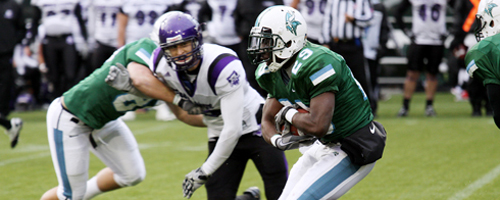College overtime turning into overkill
BILOXI, Miss. — ESPN got its money’s worth, and then some, from the Arkansas-Kentucky game last week at Commonwealth Stadium.
I’m not saying the game took too long to complete, but in the time those guys played that seven-overtime affair, the following things happened:
A) Atoms were split, bridges were built and barriers came down;
B) You could read “War and Peace” before settling in for a good chunk of Ken Burns’ PBS “Baseball” epic;
C) I left the Vaught-Hemingway Stadium press box, walked to Tad Smith Coliseum, picked up my dad in downtown Oxford and drove all the way to the Hattiesburg city limits, with a quick stop for gas in Batesville;
And D) J-Lo and Ben called it quits, twice, before making up and hitting a couple Manhattan hot spots.
Seriously, they’ve got to do something about this.
The NCAA’s decision to implement the overtime rule was long overdue in 1996, but no one said this system was going to be perfect, and, obviously, it ain’t.
The overtime format brings high drama, as we saw in last year’s national championship game between Ohio State and Miami. You get the ball at the opponent’s 25-yard line, do what you can with it, and count on your defense to make a stop, or at least break even. Then, if things are all square, you try again.
A few years after the OT system was in place, the NCAA decided teams would have to go for two-point conversions starting with the third overtime. A couple of sub-Division I-A games went five or six overtimes, it seems, and they decided to do something to streamline the system.
This just in:
It hasn’t worked.
ESPN cameras caught the Southeastern Conference’s most colorful player, Kentucky quarterback Jared Lorenzen, admonishing some UK fans for leaving early Saturday night in Lexington, when Arkansas had built a 21-7 lead against the Wildcats.
J-Load wanted his homies to know they were making a mistake.
“Y’all are gonna miss a helluva game,” said the Pillsbury Throw Boy, who to his credit has shed about 25 pounds from his 2002 playing weight of 300 and change.
The Hefty Lefty was right.
Kentucky got back in the game, with Lorenzen, naturally, leading the way. The Bluegrass Battleship hit Chris Bernard on a screen pass that covered 13 yards for the tying touchdown with 1:38 left in regulation.
It took more than four hours to play four quarters _ gee, we never noticed commercial breaks for ESPN2 games are something along the lines of water torture _ and nearly another hour to play the seven amazing overtimes.
Lorenzen and Arkansas quarterback Matt Jones kept matching touchdown for touchdown, with dueling field goals in the third OT thrown in for good measure. In the seventh overtime, Jones fired a two-point conversion pass to 320-pound Arkansas tight end Jason Peters (no truth to the rumor that he’s Lorenzen’s second cousin) and the Razorbacks had a 71-63 lead.
Kentucky beat Arkansas 66-50 last year, in basketball.
The game ended, of course, when Lorenzen tried to score on a fourth-down quarterback draw. That left the Razorbacks with the 71-63 victory, and left coaches with cause to worry about the health of their players. Players pour all the energy they have into the fourth quarter, anyway.
“I think Arkansas is a more physical team than we are,” UK coach Rich Brooks said. “I thought I had seen it all in coaching.”
Actually, we’ve seen this before.
Ole Miss and Arkansas went seven overtimes in 2001, with the Razorbacks holding on for a memorable 58-56 victory at Vaught-Hemingway. Alabama and Tennessee went five overtimes on Oct. 25 in Tuscaloosa, with the Vols escaping with a 41-38 triumph. Arkansas needed three OTs to beat the Crimson Tide in late September.
In all, 28 games involving SEC teams have gone into overtime since 1996.
As the immortal “Caddyshack” character Bishop Bickering put it, “That’s a doozy, Judge.”
The easy way out would be going to the NFL’s sudden-death system. Fifteen minutes. First team to score, wins. Call it a tie if neither team can put up any points. But the regular season in college football is too important. Both teams need to get a shot on offense.
It’s time for the NCAA to move the ball back to the 40, and otherwise, keep the system intact. Make ’em earn their points in OT. It’s clearly time to do something.



